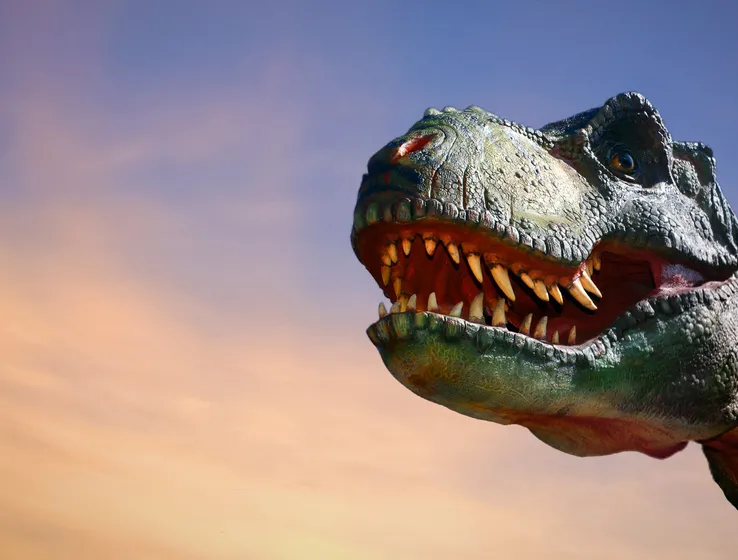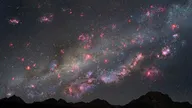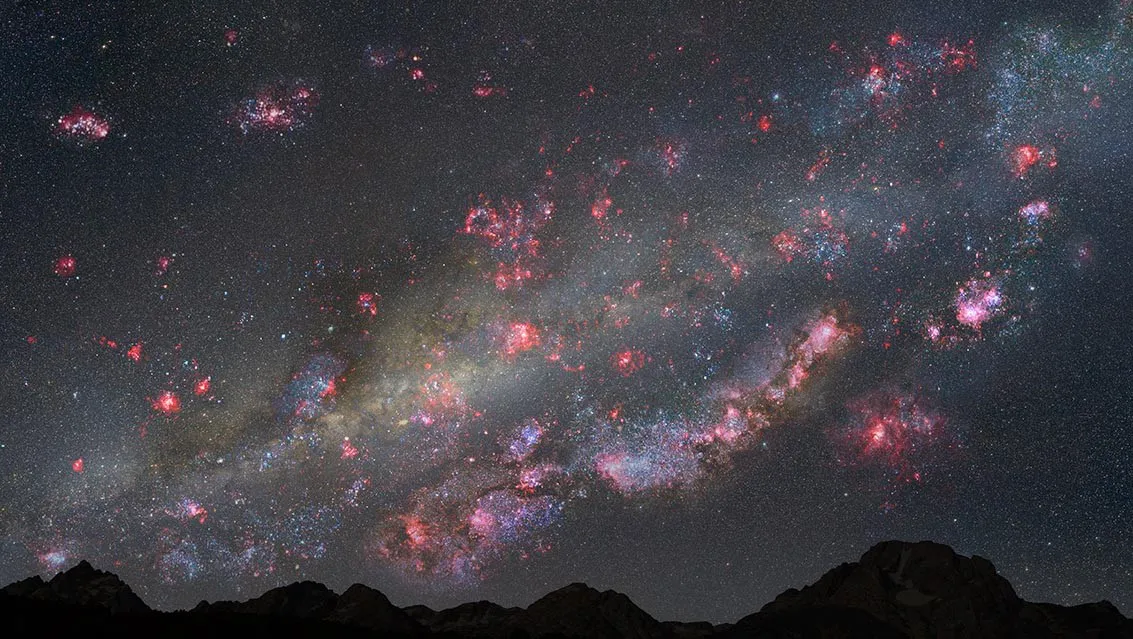Astronomy in Australia
Posted:
Does the night sky look the same on the other side of Planet Earth?
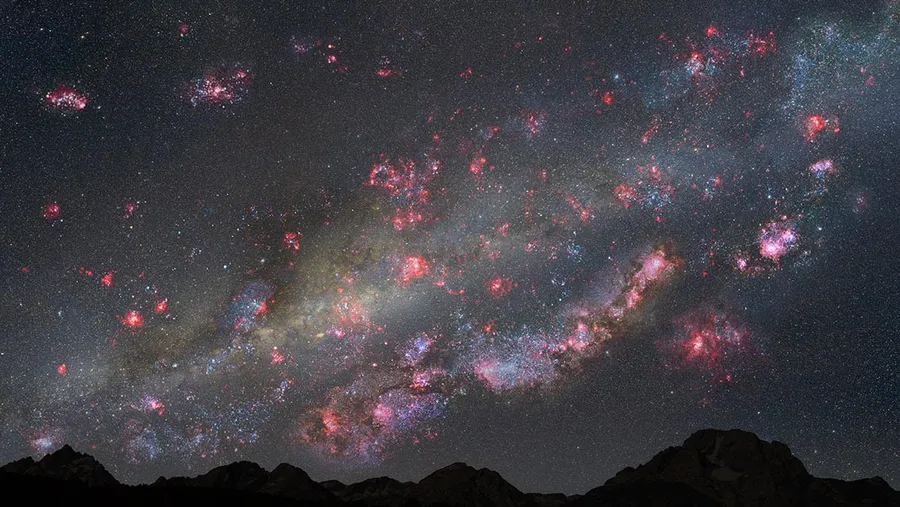
Artist's view of night sky from a hypothetical planet within a young Milky Way-like galaxy 10 billion years ago, the sky are ablaze with star birth. Image retrieved from https://images.nasa.gov/details-GSFC_20171208_Archive_e000749
Astronomy in Australia
Written by John Settingiano – School Programs Specialist
While preparing for my December 2018 trip to Australia, I was much more concerned with how many pairs of swim shorts to pack than what stars I might see at night. I was going to kick back, relax, and lather on the sunscreen.
Four days into my trip I found myself in the middle of the Australian National Botanical Gardens at 11:00pm. I was there to watch a film in the gardens (something like a drive-in theatre but without the cars) and as the night progressed, out came the stars. As the film finished, I glanced upward. Right away I recognized the constellation Orion in the northern part of the sky, thanks to three distinct stars that make up his belt. I spotted Betelgeuse, a red supergiant star the occupies the space that would be considered Orion’s armpit, only this time, Betelgeuse was not where it was supposed to be. The star was at the bottom right of Orion rather than its usual place at the top left.
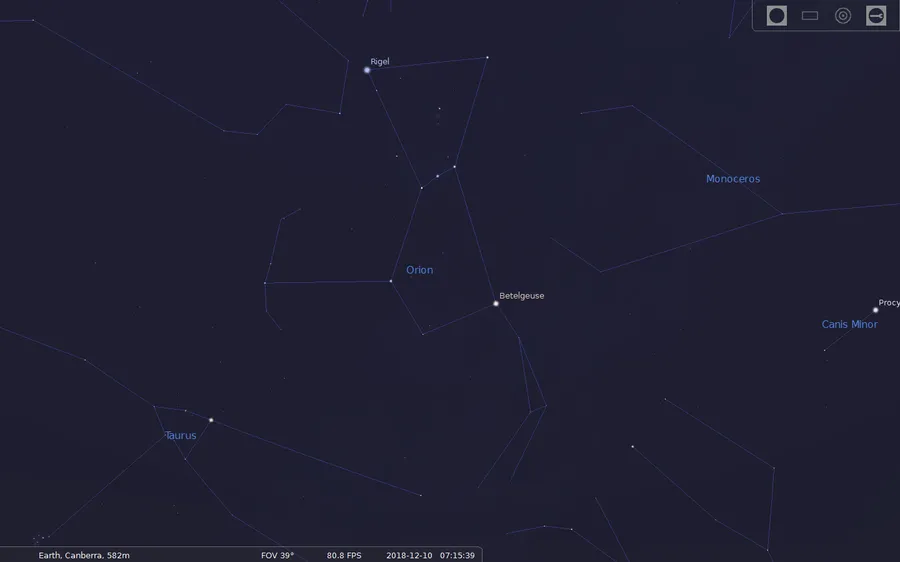
A view of Orion from Canberra, the capital city of Australia, at night. Image retrieved from Stellarium Astronomy Software.
After a few seconds of confusion and second guessing, I realized that I was in fact looking at Orion, only this time, it was upside down! Or rather, it was upside down compared to how I was accustomed to viewing Orion in the Northern Hemisphere.
This was the moment that I fully grasped that I was on the other side of planet Earth. I was in the Southern Hemisphere, it was summer in December, and the stars were upside down. After this, I started paying closer attention to Australia’s night sky.
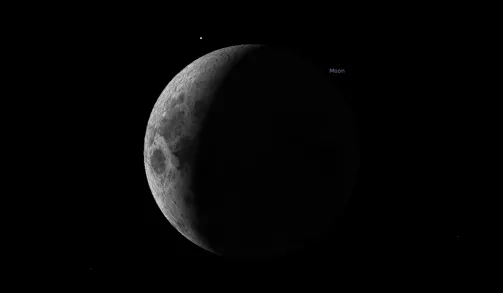
A view of a "waxing crescent moon" from the Southern Hemisphere. Image retrieved from Stellarium Astronomy Software.
The eight lunar phases that I am used to seeing were also reversed in the Southern Hemisphere. What I recognized as a “waning crescent moon” was actually a “waxing crescent moon” in Australia. In the Northern Hemisphere, the light appears to grow across the moon from right to left, while in the Southern Hemisphere, the light appears to grow across the moon from left to right. It’s amazing to see the moon and the stars you think you know, moving backwards and upside down.
Related Articles


Food Chain Reactions
How Climate Change is Impacting Canada's Lakes

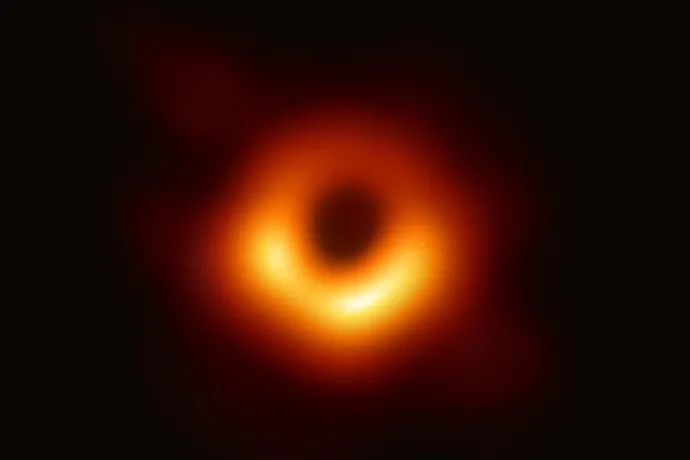
Black holes! They do exist!
On April 10th, 2019 the first image of a black hole was released. It took over a decade of research and over 200 scientists to produce this image of the massive black hole at the center of the Messier 87 galaxy. Today, we have a picture of this mysterious giant monster in the universe.

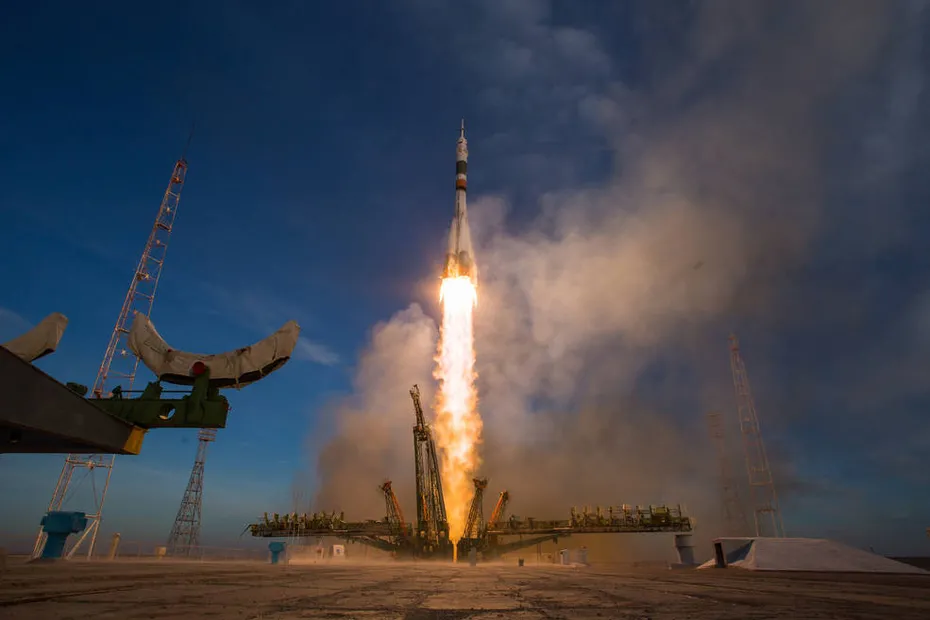
Canada’s Newest Astronaut
“That first sight, that first sunrise, I will never forget” – David Saint-Jacques
Written by Cate Collins – Staff Scientist
Related Articles


Food Chain Reactions
How Climate Change is Impacting Canada's Lakes


Black holes! They do exist!
On April 10th, 2019 the first image of a black hole was released. It took over a decade of research and over 200 scientists to produce this image of the massive black hole at the center of the Messier 87 galaxy. Today, we have a picture of this mysterious giant monster in the universe.


Canada’s Newest Astronaut
“That first sight, that first sunrise, I will never forget” – David Saint-Jacques
Written by Cate Collins – Staff Scientist
